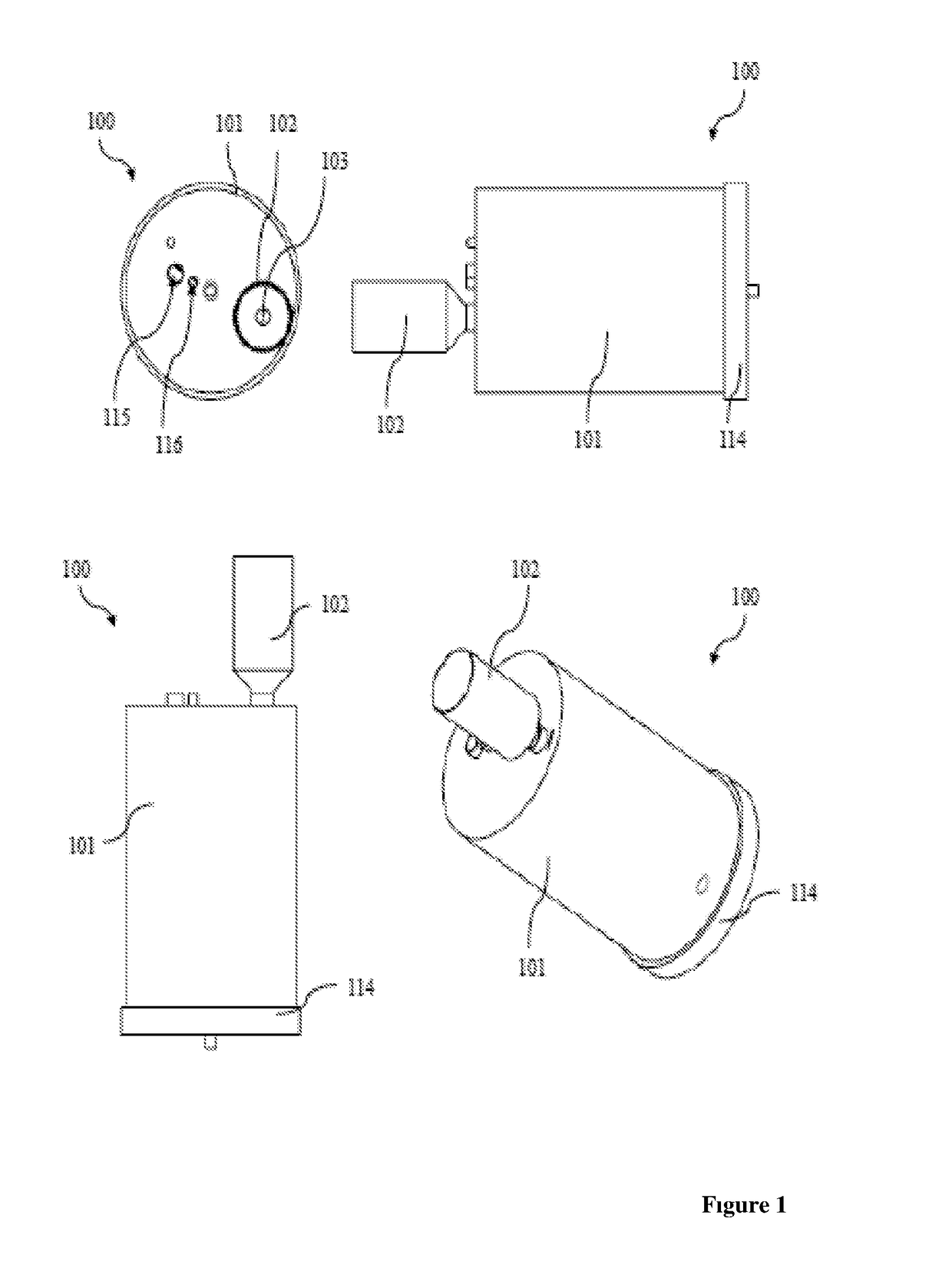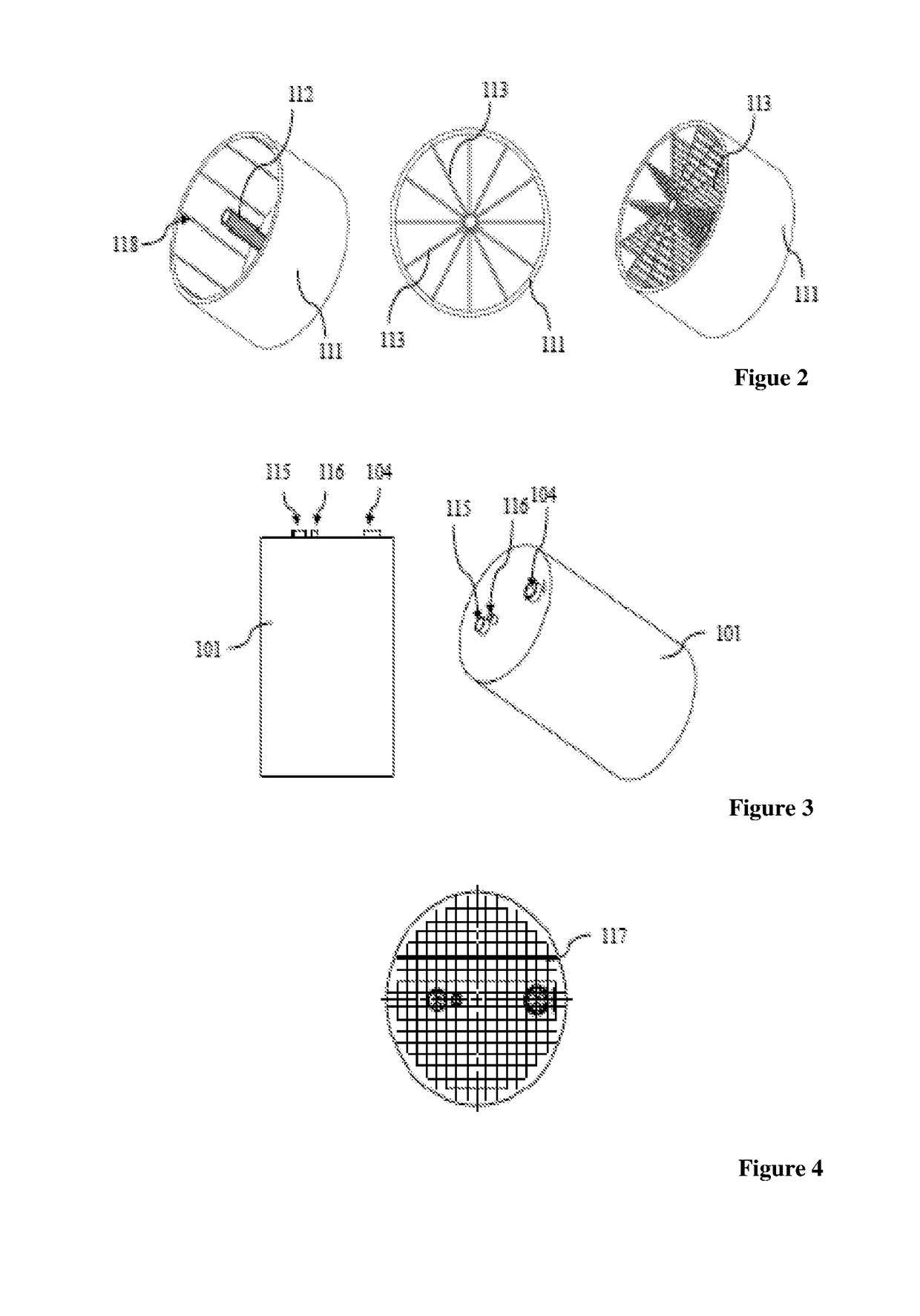Cartridge structure designed for generation of hydrogen gas
a technology of hydrogen gas and cartridge structure, which is applied in the direction of gas generation devices, fuel cells, inorganic chemistry, etc., can solve the problems of large power requirements, inability to utilise materials as efficiently as desired, and significant risks for human health and environment, and achieves the effect of convenient disassembly and cleaning the system and convenient storag
- Summary
- Abstract
- Description
- Claims
- Application Information
AI Technical Summary
Benefits of technology
Problems solved by technology
Method used
Image
Examples
example 1
[0237]Surface area of 1 hollow fibre (HF)=450*12+1885*7=18600 mm2 (internal and external)[0238]Total catalyser surface area in the system (7 HF)=18600*7=130000 mm2 [0239]H2 gas flow rate obtained on a surface area of 4510 mm2=260 ml / min[0240]Total H2 gas flow rate obtained from the catalyser surface in the system=7.37 L / min[0241]System volme=75 mm*75 mm*π*113 mm=0.5 L
[0242](75 mm=radius of cylindrical system, 113 mm-=height of system)
[0243]Assuming;[0244]Hollow fibres (311) are smooth; and[0245]Only the system volume is accounted, and tank volumes are not accounted in the calculation;[0246]H2 gas flow rate obtained in a system with a volume of 1 L=(7.37 L / min)*1 L / 0.5 L=14.74 L / min. (where system volume is 1 L)
[0247]Surface area of one of the utilised hollow fibres (311) is 186 cm2. The system contains 7 pieces of hollow fibres (311). Total surface area is 1302 cm2. When the hollow fibres (311) in the system are coated with:
1. FeCl2 catalyser, the total hydrogen gas amount generated...
PUM
 Login to View More
Login to View More Abstract
Description
Claims
Application Information
 Login to View More
Login to View More - R&D
- Intellectual Property
- Life Sciences
- Materials
- Tech Scout
- Unparalleled Data Quality
- Higher Quality Content
- 60% Fewer Hallucinations
Browse by: Latest US Patents, China's latest patents, Technical Efficacy Thesaurus, Application Domain, Technology Topic, Popular Technical Reports.
© 2025 PatSnap. All rights reserved.Legal|Privacy policy|Modern Slavery Act Transparency Statement|Sitemap|About US| Contact US: help@patsnap.com



